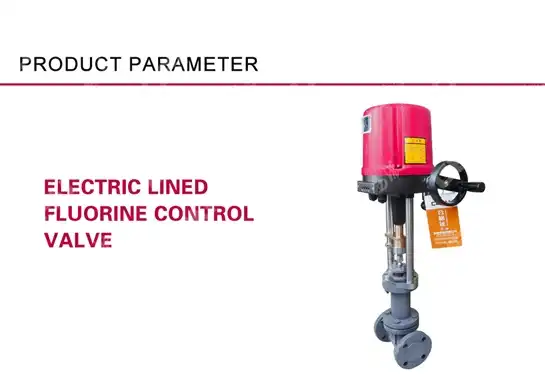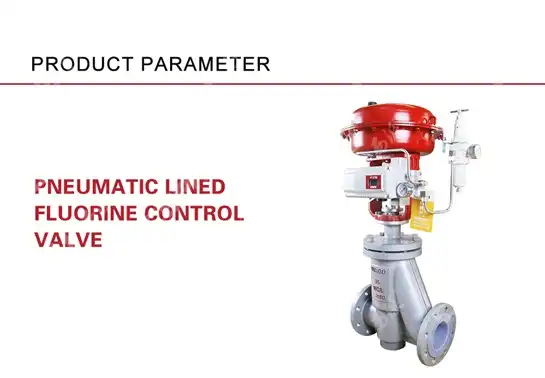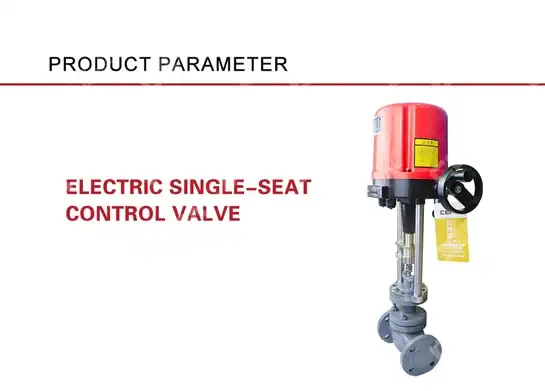How to Maintain Your Low-Temperature Valve for Peak Performance?
Industrial operations in extreme cold environments face critical challenges when Low-Temperature Valve systems fail unexpectedly, causing costly downtime, safety hazards, and production losses. Whether you're operating in petrochemical facilities, LNG plants, or cryogenic applications, understanding proper maintenance protocols for your Low-Temperature Valve is essential for ensuring reliable performance, preventing catastrophic failures, and maximizing operational efficiency in environments ranging from -60℃ to -196℃.
Essential Maintenance Principles for Low-Temperature Valve Systems
-
Understanding Low-Temperature Valve Operating Conditions
Low-Temperature Valve systems operate under extreme conditions that demand specialized maintenance approaches. These valves, particularly electric low-temperature control valves, must maintain precise flow control while handling water, gas, and oil in temperatures as low as -196℃. The unique challenges posed by cryogenic applications require maintenance personnel to understand how extreme cold affects valve components, sealing materials, and actuator mechanisms. The thermal expansion and contraction cycles inherent in Low-Temperature Valve operations create stress on valve bodies, internal components, and sealing systems. Materials such as WCB, CF8, and CF8M used in valve construction respond differently to temperature fluctuations, making regular inspection and maintenance critical. Extended valve cover designs specifically engineered for -40℃ to -196℃ applications require particular attention to prevent thermal bridging and ensure proper insulation integrity. Understanding the operational specifications is crucial for effective maintenance. Electric low-temperature control valves typically operate with 220V or 380V power supplies and utilize 4-20mA control signals for precise flow regulation. The pressure balance spool design and equal percentage or linear adjustment characteristics must be maintained through proper calibration and component inspection to ensure optimal performance throughout the valve's operational range from DN15 to DN400.
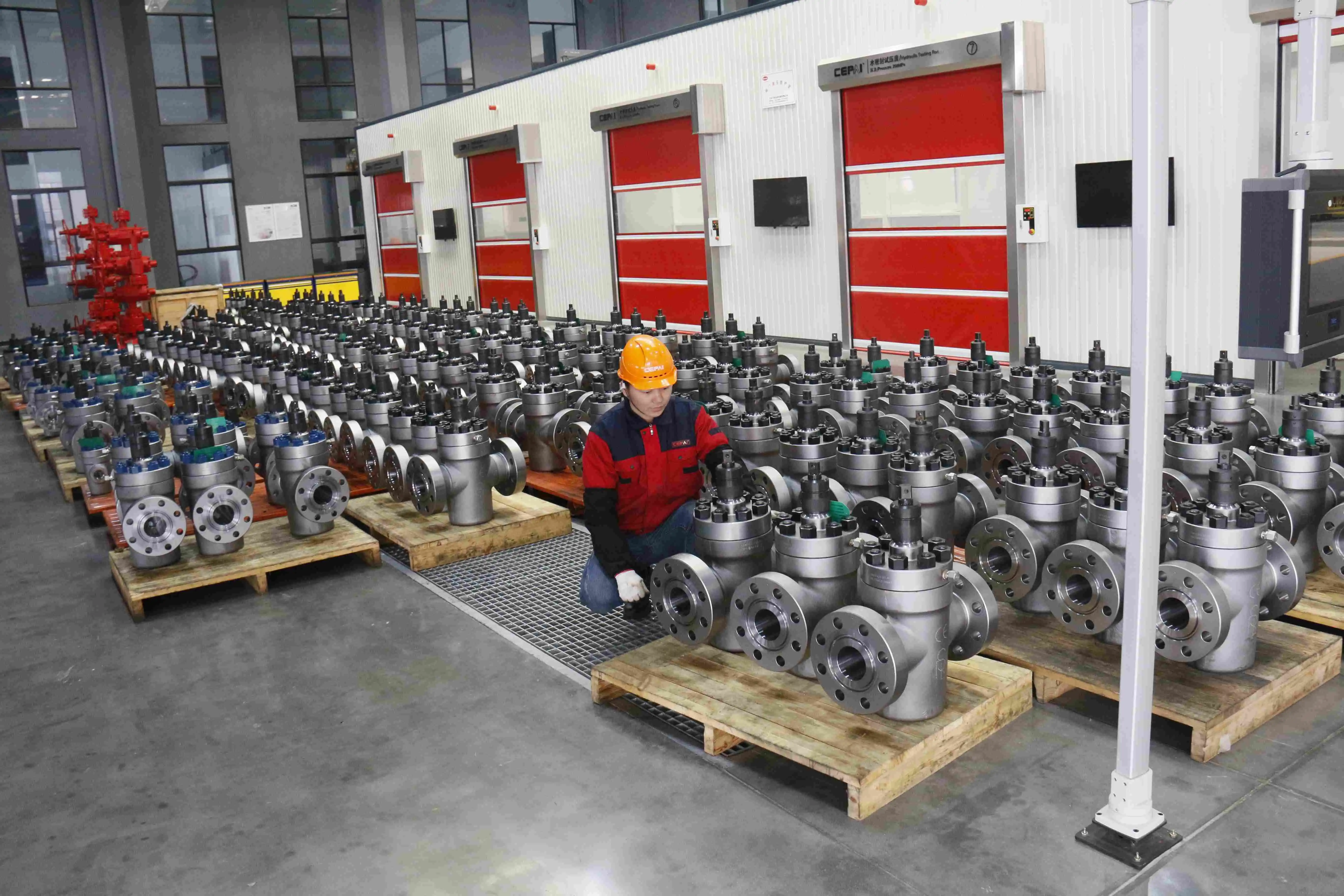
-
Critical Component Inspection Protocols
Regular inspection of Low-Temperature Valve components forms the foundation of effective maintenance programs. The valve body construction, particularly straight cage type designs used in low-temperature applications, requires systematic evaluation of internal surfaces for wear patterns, corrosion, and dimensional changes caused by thermal cycling. Inspection protocols should include detailed examination of pressure balance spools, internal materials including 304, 316, and 316L stainless steel components, and their surfacing conditions. Sealing systems in Low-Temperature Valve applications demand special attention due to the challenging operating environment. Flexible graphite and PTFE packing materials must be inspected for compression set, cracking, and chemical degradation. The bolt pressing type gland configuration requires proper torque verification and seal integrity testing to prevent leakage that could compromise system safety and performance. Regular inspection should include leak testing according to ANSI B16.104 Level IV standards for metal valve seats and Class VI requirements for non-metallic applications. Electric actuator components require comprehensive inspection covering voltage compatibility, control signal integrity, and mechanical wear assessment. The actuator housing, gear trains, and feedback mechanisms must be evaluated for proper operation within the -30°C to +70°C ambient temperature range. Position feedback systems, limit switches, and solenoid valve components should be tested for accuracy and reliability to ensure precise flow control capability essential for Low-Temperature Valve applications.
Advanced Maintenance Strategies for Optimal Performance
-
Preventive Maintenance Scheduling and Documentation
Developing comprehensive preventive maintenance schedules for Low-Temperature Valve systems requires consideration of operating frequency, thermal cycling patterns, and environmental exposure conditions. Maintenance intervals should be established based on manufacturer recommendations, operational experience, and risk assessment of potential failure modes. Critical applications in petrochemical, power generation, and metallurgical industries demand more frequent inspection cycles to prevent unexpected failures. Documentation plays a vital role in maintenance effectiveness for Low-Temperature Valve systems. Detailed maintenance records should include inspection findings, component replacement history, performance trend analysis, and corrective action documentation. This information enables predictive maintenance strategies and helps identify recurring issues that may indicate design limitations or operational challenges specific to low-temperature applications. Temperature monitoring and performance trend analysis provide valuable insights into Low-Temperature Valve condition and maintenance needs. Regular monitoring of operating parameters including flow rates, pressure differentials, and actuator response times helps identify gradual degradation before critical failures occur. Establishing baseline performance metrics and tracking deviations enables proactive maintenance interventions that minimize unplanned downtime and extend equipment service life.
-
Specialized Tools and Techniques for Low-Temperature Applications
Maintenance of Low-Temperature Valve systems requires specialized tools and techniques adapted for extreme cold conditions. Standard maintenance equipment may not function properly in cryogenic environments, necessitating the use of low-temperature rated tools, lubricants, and testing equipment. Specialized leak detection methods, including helium leak testing and thermal imaging, provide accurate assessment of seal integrity in challenging operating conditions. Calibration procedures for Low-Temperature Valve actuators must account for temperature effects on electronic components and control signals. The 4-20mA control signal accuracy can be affected by extreme temperatures, requiring specialized calibration equipment and techniques to ensure proper valve positioning and flow control. Regular calibration verification using temperature-compensated instruments helps maintain system accuracy throughout the operating temperature range. Material compatibility considerations become critical when servicing Low-Temperature Valve systems. Replacement components must be specifically rated for low-temperature service, with proper material certifications and traceability documentation. Gaskets, seals, lubricants, and other consumable items must meet cryogenic service requirements to prevent premature failure and ensure continued safe operation.
Troubleshooting Common Low-Temperature Valve Issues
-
Identifying and Resolving Seal Leakage Problems
Seal leakage represents one of the most common issues in Low-Temperature Valve applications, often resulting from improper material selection, installation errors, or thermal cycling damage. Systematic troubleshooting begins with identifying the leak location and assessing the severity of the problem. External leakage around valve packing areas typically indicates gland adjustment needs or packing replacement, while internal leakage suggests seat damage or improper valve closure. Temperature-induced seal degradation manifests differently depending on the sealing material and operating conditions. Flexible graphite packing may experience compression set or thermal cycling fatigue, while PTFE components can become brittle and crack in extreme cold. Understanding these failure mechanisms enables maintenance personnel to select appropriate replacement materials and installation procedures that address root cause issues rather than providing temporary fixes. Leak testing procedures for Low-Temperature Valve systems must account for the challenging inspection environment and safety considerations. Pressurized leak testing using inert gases provides safe and effective evaluation of seal integrity, while specialized detection equipment enables accurate location of small leaks that could develop into major problems. Documentation of leak test results and trending of leak rates over time helps establish predictive maintenance intervals and component replacement schedules.
-
Actuator Performance Optimization and Troubleshooting
Electric actuator performance issues in Low-Temperature Valve applications often stem from temperature effects on electronic components, mechanical wear, or control signal problems. Systematic troubleshooting begins with verification of power supply voltage, control signal integrity, and actuator response characteristics. Temperature compensation adjustments may be necessary to maintain accurate positioning throughout the operating temperature range. Control signal degradation can occur due to temperature effects on wiring insulation, connection integrity, or transmitter accuracy. The 4-20mA control signals used in Low-Temperature Valve applications require proper wire routing, shielding, and termination techniques to prevent interference and ensure reliable operation. Regular testing of signal integrity and calibration verification helps identify developing problems before they affect valve performance. Mechanical wear issues in Low-Temperature Valve actuators may include gear train damage, bearing deterioration, or coupling problems between the actuator and valve stem. These issues often develop gradually and can be identified through regular performance monitoring and trending analysis. Proper lubrication using low-temperature rated greases and regular inspection of mechanical components helps prevent premature wear and extends actuator service life.
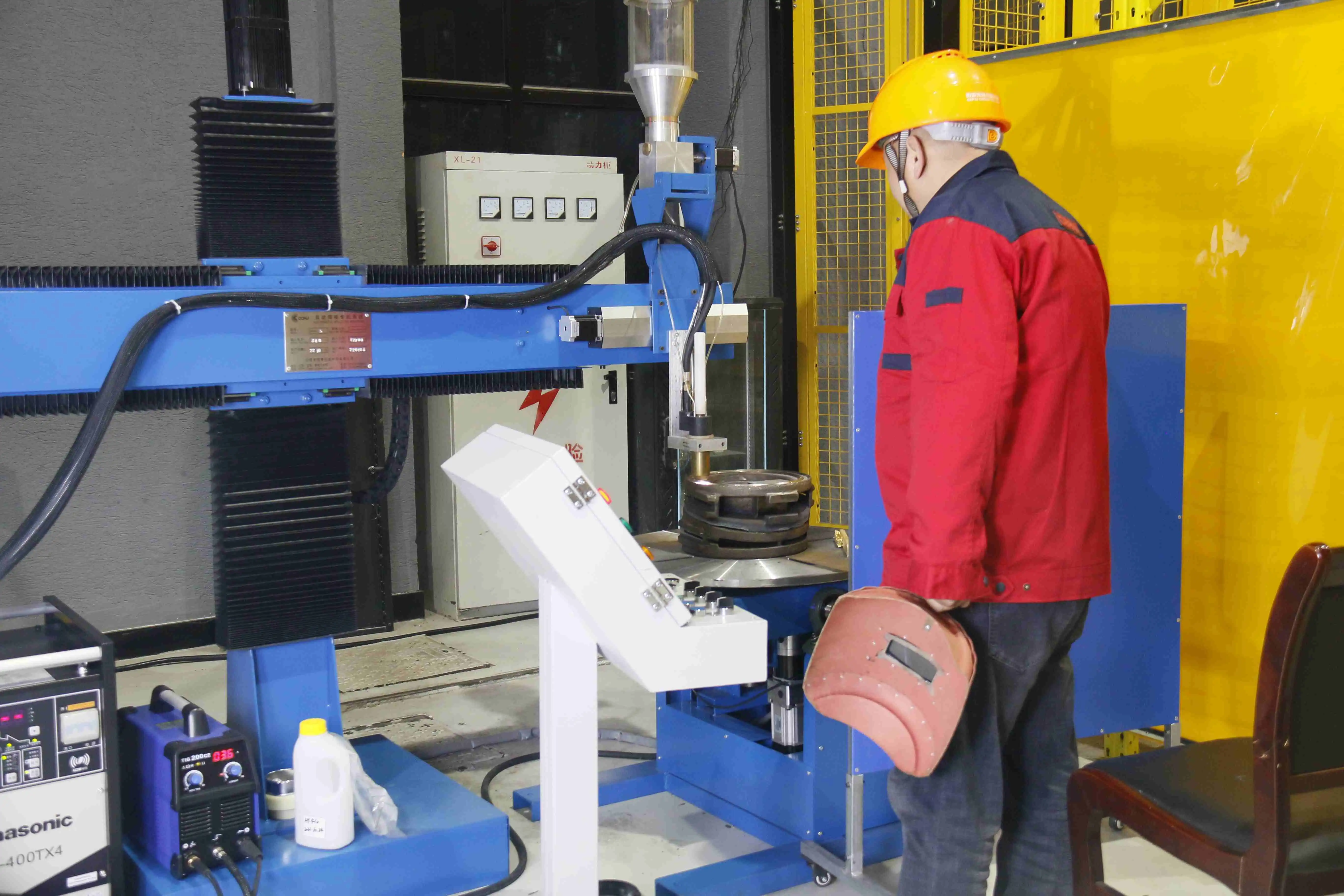
Quality Assurance and Performance Validation
-
Testing and Certification Requirements
Low-Temperature Valve maintenance programs must include comprehensive testing and validation procedures to ensure continued safe and reliable operation. Performance testing should verify flow characteristics, pressure ratings, and temperature capabilities according to relevant industry standards and manufacturer specifications. Regular testing validates that maintenance activities have restored proper valve function and identifies any developing issues that require attention. Certification requirements for Low-Temperature Valve applications may include pressure testing, material verification, and dimensional inspection according to ANSI, API, and other applicable standards. Compliance with these requirements ensures that maintained valves continue to meet safety and performance requirements for their intended applications. Documentation of test results and certification status provides traceability and supports regulatory compliance efforts. Quality control procedures during maintenance activities help ensure consistent results and prevent errors that could compromise valve performance or safety. Standardized procedures, checklist usage, and independent verification of critical activities provide assurance that maintenance work meets established standards. Training and certification of maintenance personnel ensures they possess the knowledge and skills necessary for effective Low-Temperature Valve maintenance.
-
Performance Monitoring and Continuous Improvement
Ongoing performance monitoring provides valuable feedback on maintenance effectiveness and identifies opportunities for improvement. Key performance indicators for Low-Temperature Valve systems include reliability metrics, maintenance costs, and operational availability. Trending of these metrics over time helps identify the most effective maintenance practices and areas where additional attention may be needed. Root cause analysis of failures and performance issues enables continuous improvement of maintenance programs. Understanding why problems occur and implementing corrective actions helps prevent recurrence and improves overall system reliability. Collaboration with valve manufacturers and industry experts provides access to latest maintenance techniques and best practices for Low-Temperature Valve applications. Integration of predictive maintenance technologies, including vibration analysis, thermal monitoring, and performance trending, enhances maintenance program effectiveness. These technologies provide early warning of developing problems and enable condition-based maintenance strategies that optimize maintenance intervals and reduce lifecycle costs. Investment in advanced monitoring capabilities provides long-term benefits through improved reliability and reduced maintenance requirements.
Conclusion
Effective Low-Temperature Valve maintenance requires comprehensive understanding of extreme cold operating conditions, specialized techniques, and systematic approaches to inspection, troubleshooting, and performance validation. Regular maintenance prevents costly failures and ensures reliable operation in critical industrial applications.
Cooperate with CEPAI Group Co., LTD.
As a leading China Low-Temperature Valve manufacturer and China Low-Temperature Valve supplier, CEPAI Group Co., LTD. offers comprehensive solutions for your Low-Temperature Valve requirements. Our High Quality Low-Temperature Valve products, available through China Low-Temperature Valve wholesale programs, ensure optimal performance in extreme conditions. Whether you need Low-Temperature Valve for sale or competitive Low-Temperature Valve price quotations, our China Low-Temperature Valve factory delivers excellence backed by ISO certifications and industry expertise. Contact cepai@cepai.com for technical consultation and customized solutions.
References
1. "Cryogenic Valve Design and Maintenance Practices" by American Society of Mechanical Engineers (ASME), Committee on Cryogenic Valves
2. "Low Temperature Materials and Design Guidelines for Industrial Valves" by Peterson, J.K. and Williams, R.A., Industrial Valve Technology Journal
3. "Maintenance Strategies for Extreme Temperature Valve Applications" by Smith, M.D., International Valve Maintenance Handbook, Third Edition
4. "API Standards for Low Temperature Valve Testing and Certification" by American Petroleum Institute (API), Standards Committee on Valves and Fittings
_1745994790767.webp)
Get professional pre-sales technical consultation and valve selection services, customized solution services.

About CEPAI
